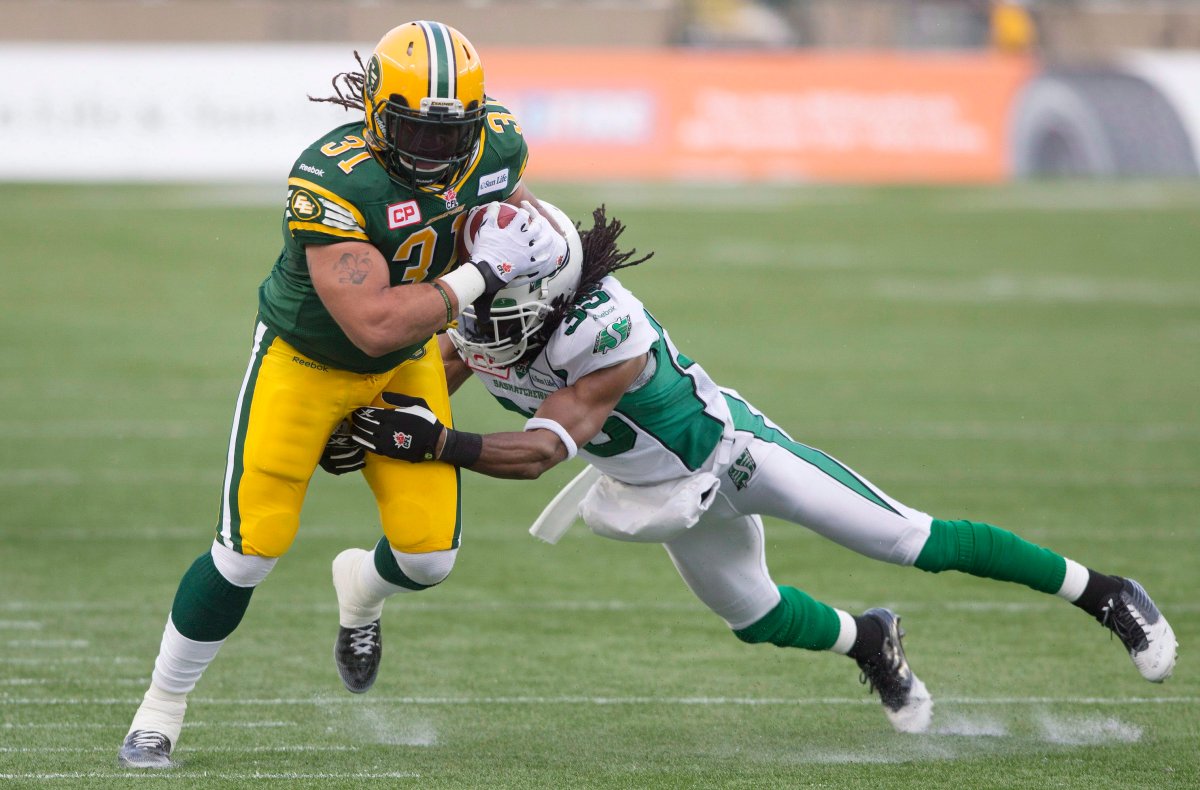EDMONTON — There’s no doubt 2014 was the year of the defence in the Canadian Football League. For the first time in recent history, the NFL surpassed the CFL in scoring.

CFL officials say it wasn’t a knee-jerk reaction, but the league set out five major objectives and priorities to improve the game. As a result, seven rule changes were announced that are hoped to speed up the game and increase offence.
The rule change that is expected to bring about the most change is that which limits contact by a defender on a potential receiver. Contact is allowed within five yards of the line of scrimmage, after that it’s only hand battles that can ensue – the defender must turn his hips and run to sustain coverage.
“I think the one that we’re working really hard to make sure we do well is the five-yard contact zone,” said CFL vice president of officiating Glen Johnson. “Some of the officials that are covering some of the receivers have to adjust their angles and they have to move a little closer to the line of scrimmage.”
Two other rule changes are expected to change the look and feel of the game, while still keeping that CFL football feel.
On special teams, the inside five lineman on the kicking team won’t be allowed to move outside one yard of the line of scrimmage until the ball is kicked. The former rule allowed those players to take off as soon as the ball is snapped. The hope is that this will reduce the number of no yard penalties and illegal blocks. It will also give the returner more space.
“That’s what the governors told us to do,” said Johnson. “Take the fantastic game we have, the fantastic athletes we have and give them more room to play.
“We’re not going to make the field bigger so what we need to do is just get rid of the things that are restricting ability for those athletes capabilities to shine through.”
These rule changes create room.
Another major change that fans will really notice is the modified convert. The ball will move to the 25-yard line, which means it’s a 32-yard kick instead of 12 yards. Last year 99.4 per cent of converts were made. This change could drop that percentage to the low 80s.
If a team opts for a two-point convert, the ball will be placed on the three. Johnson believes this will change strategy because the kick is now uncertain.
Three of the seven rule changes are meant to bring an end to negative stoppages which just slow down the game and make it feel longer for fans.
However, the growing pains could mean more penalties to start the season, especially through two pre-season games.
“You’re probably right, it might take a few weeks in to the regular season until we all feel we’re in a good spot,” admits Johnson.
Johnson was in Edmonton to meet with the Eskimos’ coaching staff. He spent three hours with the group going over each rule, with game tape as examples.
“The coaching staff was very receptive. They came very prepared, they asked a lot of great questions. We debated some things, like we always do. But at the end of the day I believe we’re on the same page.”
Reviews are, of course, mixed.
“I bump into players once in a while,” said Johnson. “I think it depends on what side of the ball you’re on.
“What I do believe and feel in talking to a lot of the players and coaches is that the good coaches, the good players are going to shine through more now.
“This is something that gives them an opportunity to do what they do best because we’re getting rid of the clutching and grabbing and the marginalization of play. It’s now going to be purely about the skill.”
Protocol changes
The league will also be implementing some key protocol changes to improve game flow and increase tempo.
The officials will all be wearing wireless communication devices, to avoid having to run across the field to talk about a penalty or play.
The referee will also wear a wireless headset connected to the CFL Command Centre to reduce valuable seconds on a challenge. He no longer has to run to the timer’s table after discussing with a coach what is being challenged.
A team can also signal to a referee that it doesn’t want to substitute and want to use a tempo offence. The ref will then blow the play in immediately and allows the team on ‘O’ to dictate the pace of play.


Comments